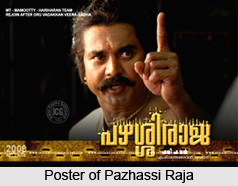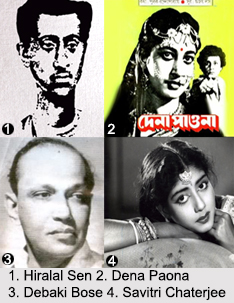 Malayalam cinema has evolved over the years. Initially the mythological films were popular amongst the audience but with time their preferences changed and so did the themes of the Malayalam films. It took a little bit of time for the Malayalam films to find their separate identity. Malayalam cinema is regarded as a great art-form; in fact, a more complete synthesis of all the art forms.
Malayalam cinema has evolved over the years. Initially the mythological films were popular amongst the audience but with time their preferences changed and so did the themes of the Malayalam films. It took a little bit of time for the Malayalam films to find their separate identity. Malayalam cinema is regarded as a great art-form; in fact, a more complete synthesis of all the art forms.
At one point of time Malayalam films were made as a remake of the popular Tamil cinema and Telugu films. However there were films in the initial years too that are worthy of appreciation. Chemmeen, Swayamvaram, and Nirmalyam are some of them. Malayalam cinema reached new heights primarily due to the contribution of directors like Adoor Gopalakrishnan, G. Aravindan and Shaji Karun. While popular films that bear the imprint of melodramatic musicals are produced in large numbers, the artistic cinema continues to grow. Despite some serious economic handicaps, Malayalam cinema in Kerala has built up a good record.
 Malayalam cinema witnessed a drastic change in the middle of the 1970s. The `New Wave Malayalam Cinema` or the `Malayalam Parallel Cinema` emerged during that time. The movement started with Adoor Gopalakrishnan`s first film Swayamvaram in 1972. For the first time Malayalam films got noticed at the International film arena. Apart from the role of the leading man, role of the women in films also underwent changes portraying the then contemporary situations. These films went onto portray slices from life itself. Further, an important development in 1970 was the institution of State Awards for films by the Kerala Government.
Malayalam cinema witnessed a drastic change in the middle of the 1970s. The `New Wave Malayalam Cinema` or the `Malayalam Parallel Cinema` emerged during that time. The movement started with Adoor Gopalakrishnan`s first film Swayamvaram in 1972. For the first time Malayalam films got noticed at the International film arena. Apart from the role of the leading man, role of the women in films also underwent changes portraying the then contemporary situations. These films went onto portray slices from life itself. Further, an important development in 1970 was the institution of State Awards for films by the Kerala Government.
Some noteworthy Malayalam films are Nallathanka (1950), Navalokam (1951), Thiramala (1953), Neelakuyil (1954), Chemmeen (1965), Nirmalyam (1973), Kabani Nadi Chuvannappol (1975), Kodiyettam (1977), Aparna (1981), Elippathayam (1984), Vanaprastham and more.
As far as popular cinema was concerned it was filled with melodrama and there were a lot of song and dance sequences. These kinds of Malayalam films were quite popular till 1980s. Directors like Joshi followed this set pattern and made films like Moorkhan (1980), Raktham (1981) and Sambhavam (1981).
 However it was the same director who changed this established form with movies such as New Delhi (1987), Nair Saab (1989) and Pathram (1999). All these films were technically superior. Priyadarshan brought back the magic of comic genre in Malayalam films. Priyadarshan teamed up with Mohanlal and delivered some of the finest Malayalam films till date such as Thalavattam (1986), Chitram (1988), Kilukkam (1991) and Kaalapani (1995). Avalude Raavukal (1979) was a landmark film in the history of commercial cinema in Kerala. Some of the big budget films of Director Irruppam Veedu Sasidaran like Angadi (1980), Trishna (1981), Raagam, Anubandham and Aalkkuttathil Thiniye (1984) were artistically superior. He also made political films like Ee Nadu (1982), Vartha and Aavanazhi (1986).Elippathayam
However it was the same director who changed this established form with movies such as New Delhi (1987), Nair Saab (1989) and Pathram (1999). All these films were technically superior. Priyadarshan brought back the magic of comic genre in Malayalam films. Priyadarshan teamed up with Mohanlal and delivered some of the finest Malayalam films till date such as Thalavattam (1986), Chitram (1988), Kilukkam (1991) and Kaalapani (1995). Avalude Raavukal (1979) was a landmark film in the history of commercial cinema in Kerala. Some of the big budget films of Director Irruppam Veedu Sasidaran like Angadi (1980), Trishna (1981), Raagam, Anubandham and Aalkkuttathil Thiniye (1984) were artistically superior. He also made political films like Ee Nadu (1982), Vartha and Aavanazhi (1986).Elippathayam
 Other commercially successful Malayalam directors were Rajasenan, Vinayan, Bhadran, Anil Babu, Thambi Kannanthanam and T S Suresh Babu. However it was Prem Nazir who brought with him the pattern of multistarrers in commercial Malayalam films. 1980s saw the emergence of some new superstars and a completely different genre of filmmaking. Mammootty and Mohanlal delivered some of the most memorable Malayalam films. The industry also received some of the finest actors of Indian cinema like Suresh Gopi, Nadumudi Venu, Thilakan and Murali.
Other commercially successful Malayalam directors were Rajasenan, Vinayan, Bhadran, Anil Babu, Thambi Kannanthanam and T S Suresh Babu. However it was Prem Nazir who brought with him the pattern of multistarrers in commercial Malayalam films. 1980s saw the emergence of some new superstars and a completely different genre of filmmaking. Mammootty and Mohanlal delivered some of the most memorable Malayalam films. The industry also received some of the finest actors of Indian cinema like Suresh Gopi, Nadumudi Venu, Thilakan and Murali.
After some years of deterioration, Malayalam cinema saw a renaissance in 2010 with the release of several experimental films from new directors. This included Kutty Srank, Pranchiyettan & the Saint, T. D. Dasan Std. VI B, Traffic, City of God, Melvilasom, Adaminte Makan Abu and Salt N` Pepper. This era also saw the release of a slew of multistarrers, following the box-office success of Twenty: 20




















